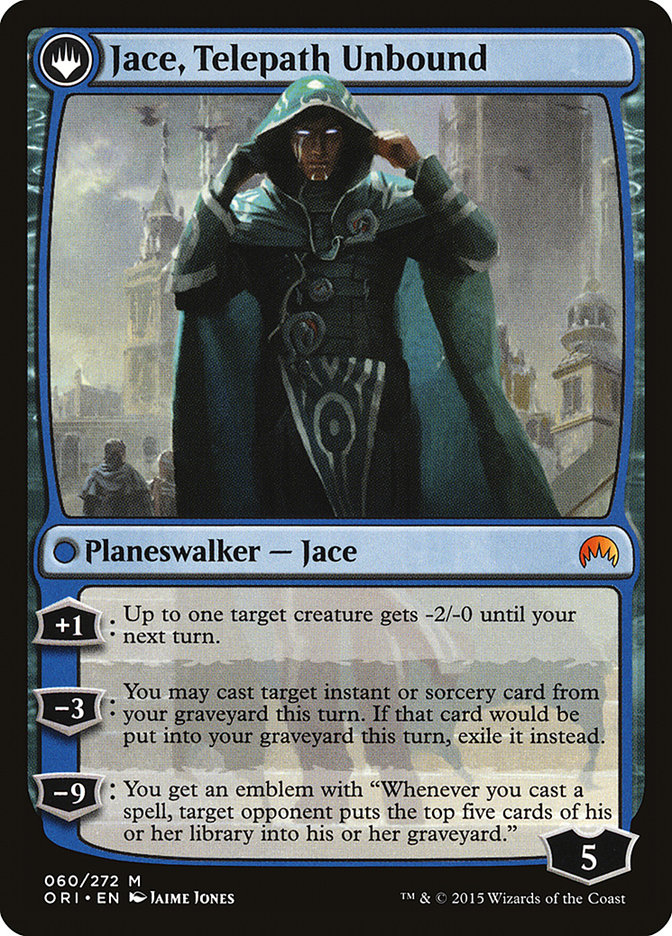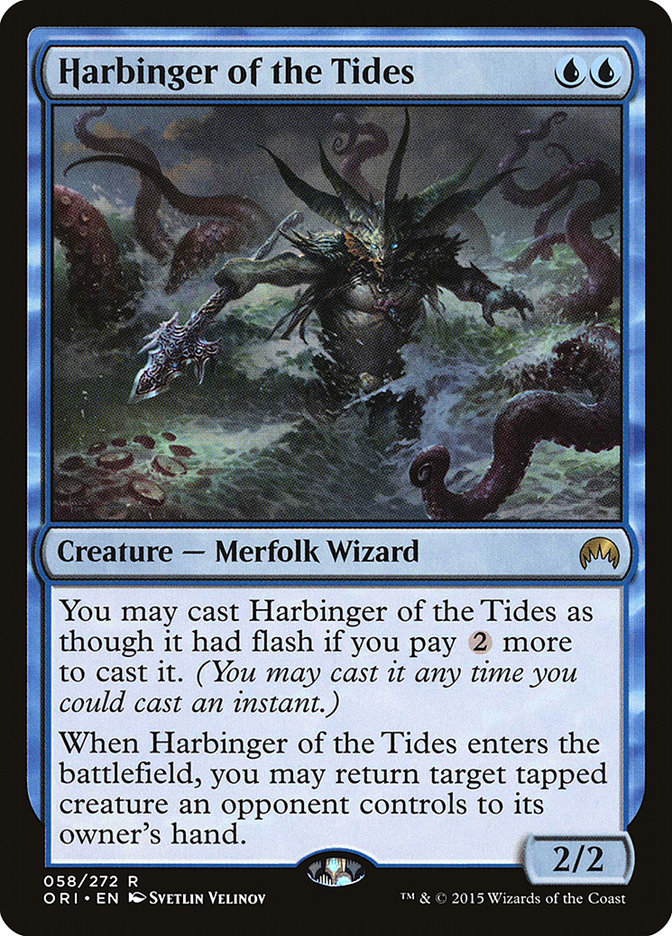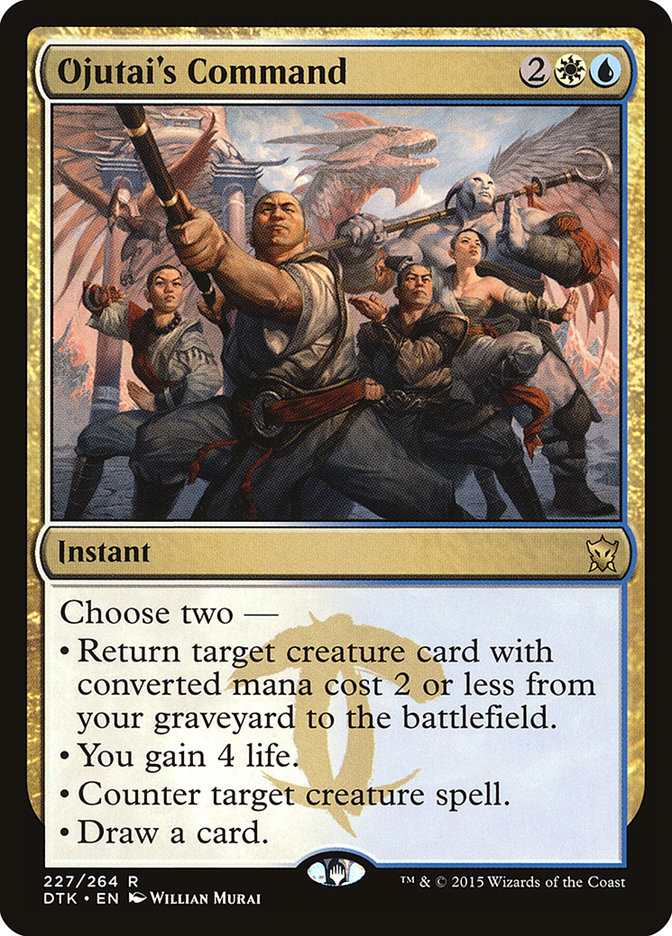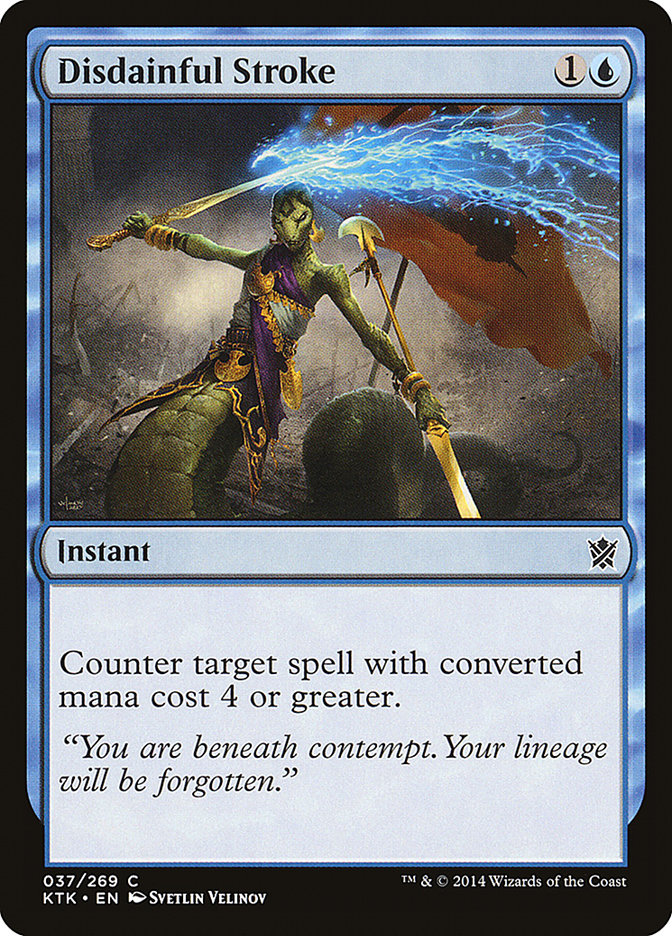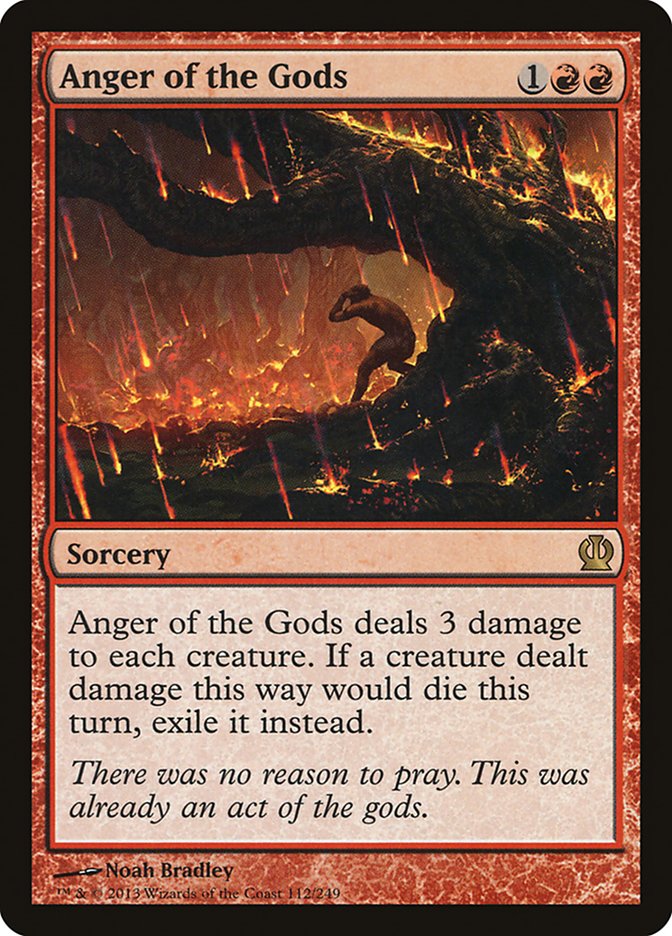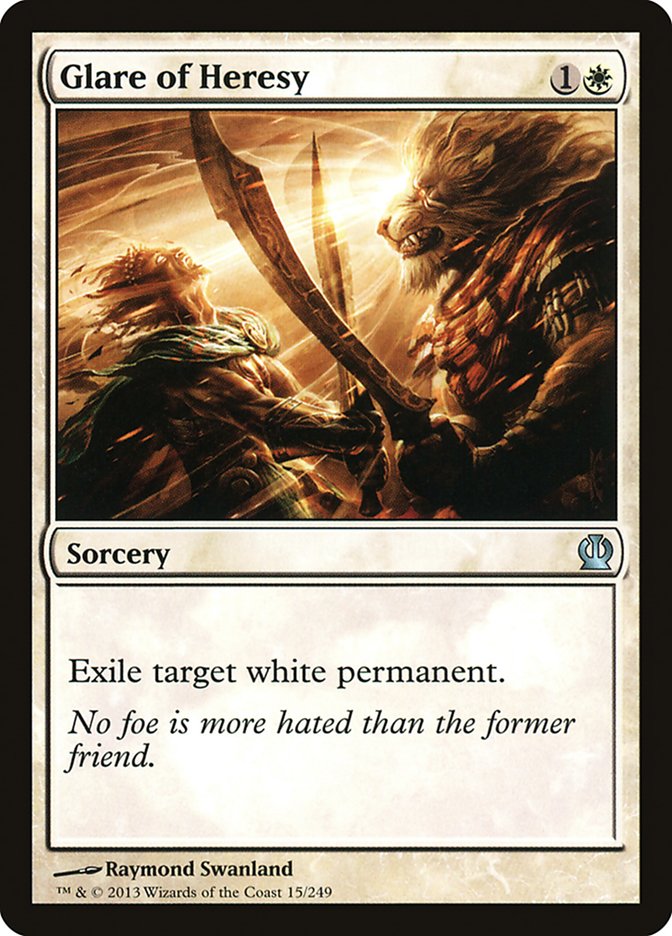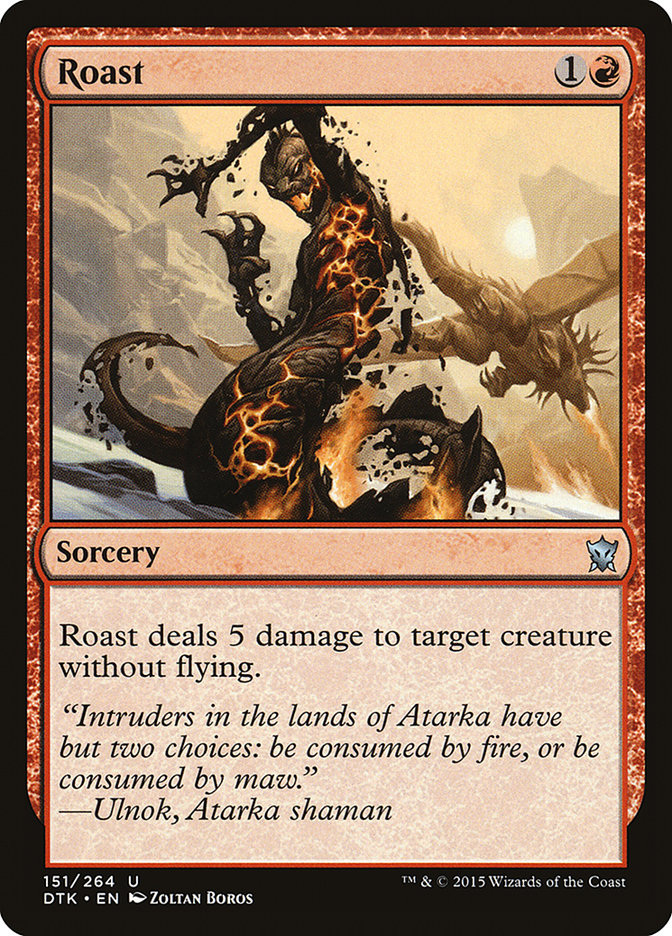I’ll see everyone at the Open Series in Chicago this weekend, and I’ll likely be playing Jeskai.
Creatures (18)
- 3 Goblin Rabblemaster
- 4 Mantis Rider
- 4 Soulfire Grand Master
- 4 Jace, Vryn's Prodigy
- 3 Harbinger of the Tides
Lands (25)
Spells (17)

So, why Jeskai? It’s certainly had kind of a rough go of things as of late. It was one of the best decks at Pro Tour Khans of Tarkir, but when the Siege Rhino decks got leaner and tighter, Jeskai kind of fell off the map. Valorous Stance and Roast being released certainly helped, but Dragons of Tarkir once again boosted the power of Abzan decks thanks to Den Protector and Deathmist Raptor.
Ultimately, Jeskai suffered from an inability to race Siege Rhino or deal with Siege Rhino and friends while also establishing a clock. Thanks to Magic Origins we have some extra two-drops, and with them, a fighting chance!
In regards to the Abzan matchup, Harbinger of the Tides probably isn’t going to do much work. The 2/2 body doesn’t battle profitably against any of their creatures, and between Den Protector, Siege Rhino, and Satyr Wayfinder, there’s nothing you want to bounce of theirs anyway. If it could save your own creatures from removal, maybe we’d have something to consider.
Jace, Vryn’s Prodigy is the big winner. To fully understand why Jace might be good, we should check out the deck Brad Nelson used at Grand Prix Providence.
Creatures (16)
Lands (26)
Spells (18)

In order to adapt, Jeskai can no longer try to be a tempo or burn deck. It already sits in the awkward midrange spot where decks like Goblins can go under you and basically anything else goes over you. Overall, it’s not pretty, but thanks to being very malleable it’s able to survive. Sometimes you have a controlling hand and sometimes you have an aggressive hand, or sometimes the game state dictates you play one role or the other, and this deck is capable of doing that very well. Additionally, cards like Disdainful Stroke and Valorous Stance allow you to break serve on the regular.
My deck is attempting to be the same, except that instead of Dragonlord Ojutai at the top end, I have Jace, Vryn’s Prodigy as my “big” spell. It might not seem like much, but Jeskai was always a deck that was plagued by having the wrong cards in the wrong matchups. Since your removal was typically small-ish burn spells, it could be semi-dead in certain matchups, such as against the aforementioned Abzan decks. In theory, you could use your removal to finish people off, but that doesn’t work well against Siege Rhino. Meanwhile, Abzan had access to Thoughtseize and Hero’s Downfall, which don’t really care about what you’re trying to do. Their cards were rarely dead, which left you at a huge disadvantage.
With Jace, we have a way to turn those semi-dead cards into potentially useful ones. Additionally, the Snapcaster mode on Jace’s flipside gives you some additional card advantage. The typical play pattern is start looting with Jace and play two spells on turn four or five. At that point, their board should be clear, your hand should be stocked, and you even have a planeswalker left on the battlefield. It’s not an amazing planeswalker, but you can cash it in for additional value in a turn or two if need be. It’s best to think of Jace, Vryn’s Prodigy as a Brainstorm tacked onto a Divination.
Brad’s deck used Dragonlord Ojutai to accomplish something similar, albeit in an entirely different manner. He also had a finisher that occasionally played a huge role by taking the game over by itself. Jace is just that, except on a much smaller scale. In general, I prefer the cheaper card, even if the more expensive card is potentially more powerful.
So, yeah. Jace, Vryn’s Prodigy has been excellent. It kind of outshines Harbinger of the Tides to a certain degree, but that’s only because the card drawer tends to get my attention over the tempo tool even if the tempo tool might translate into more game wins. Call it a weakness.
By far the best thing about Harbinger of the Tides is that losing to Stormbreath Dragon will likely be a thing that no longer happens. Getting your Elvish Mystic bounced on turn two is no joke, but do you really want to try playing five-mana spells against what effectively amounts to Snapcaster Mage plus Vapor Snag? Didn’t we learn this lesson already? Harbinger of the Tides is like Remanding your opponent’s permanent, but instead of drawing a card you put a 2/2 into play. This card is busted!
I’m only playing three because of mana considerations and because of the fact that it’s not a card you can happily slam in the early game, but maybe that’s a mistake. I do foresee situations where you’re in a racing situation and Harbinger of the Tides sways things in your favor, which leads to future Harbinger of the Tides not being able to bounce anything since they have to keep all their creatures on defense, but is that truly so bad? Maybe I should be playing the full four copies, but I think Ojutai’s Command makes up for that.
In reality, Ojutai’s Command was responsible for Jeskai’s resurgence. Harlan Firer, currently fifteenth on the Player’s Championship Leaderboard, was quietly crushing Opens with his version of Jeskai, and I think a big part of that was because of the Ojutai’s Command / Soulfire Grand Master engine. Early Soulfire Grand Masters will likely die and late-game Soulfire Grand Masters might not be able to rebuy any of your spells because you’ve used them already. Ojutai’s Command steps in to give you a better shot of assembling that engine in the late-game, which gives Jeskai a late-game push over decks like Abzan. Now that we have access to Jace and Harbinger of the Tides, Ojutai’s Command is a staple.
The creature suite received an overhaul with Magic Origins, but my spell suite is a tad different also. I’m scared of the decks trying to go under me, which is why I have Wild Slash. Perhaps that’s an overreaction, especially considering my curve has been lowered significantly already. I’ve been punished for running Wild Slash before and that could happen here again. Still, I don’t want to fall behind to Elvish Mystic decks and I want to have those double-spell turns sooner rather than later. In the games where Wild Slash is good, it’s often your best card, so I think it’s worth the risk.
I’m definitely losing out more often on the Stoke the Flames / Soulfire Grand Master interaction. Maybe Mantis Rider and Fleecemane Lion will give me the beatdowns. Perhaps a kind soul will convince me to cut the Wild Slashes before the tournament so I don’t have to subject myself to that embarrassment.
Clash of Wills has been fine but not awe-inspiring. The high density of enters-the-battlefield-tapped lands leads to keeping mana open for Clash of Wills a difficult task at times. I definitely wanted some countermagic in the main as a hedge against bigger strategies, but that’s kind of counter-intuitive to my rationale behind playing Wild Slash. I feel safer with some counterspells as a safety net, but both Clash of Wills and Disdainful Stroke have their issues, which is why I went with an even split between them.
The counterspells, Ojutai’s Commands, and Harbinger of the Tides each create their own spots where it makes it difficult for their opponent to make decisions. I’m all for anything that puts my opponents in the squeeze, and this combination of cards does that quite well.
Sideboarding
First of all, I’d like to say that I don’t think my sideboard is very good. I like the cards and the plans I have, but I have a sneaking suspicion that I can do better. Approach with caution.
Since this deck is underpowered to a degree, something that trades positively tempo-wise against larger spells is somewhat necessary. Clash of Wills does this some of the time, but we need something a little more decisive. You can’t load up on Disdainful Strokes because then you could get beaten down by Deathmist Raptors while holding a bunch of them, but three is a fairly good number. If I were playing against Abzan Aggro, which has anywhere from four to eight big spells, I could see bringing in one or two.
This one is pretty obvious, but it’s worth noting that when Tom Ross was playing against Josh Utter-Leyton’s Esper Dragons deck in the Standard Super League, Tom brought it in to fight Foul-Tongue Invocation. Granted, back then there were fewer two-drops in the Jeskai deck, but it just goes to show that there are innovative ways to be sideboarding.
For Week One of Magic Origins Standard, I expect a healthy amount of decks that go wide. Goblins and Elves are among them, but we might see some Mardu or Mono-Black lists show up also. Any G/B Collected Company deck featuring Liliana, Heretical Healer and Nissa, Vastwood Seer will be weak to Anger of the Gods as well. Anger is also relevant against any Deathmist Raptor deck, but we’ll get to that in a moment.
I’m slightly worried about Constellation decks, so I could see playing another copy, but it’s mostly for Siege Rhino and Elspeth, Sun’s Champion.
This is my go-to for fighting Siege Rhino and other big creatures. It could be more Valorous Stances, but this can also be brought in against something like Goblins to gain you five life alongside a Soulfire Grand Master. The fact that I can also bring it in against smaller creatures gives it the nod.
Elspeth is my finisher. When you have Dig Through Time and you plan on the games going relatively long, having a high-impact card to draw into can be a lifesaver. Similarly, I may end up with a singleton copy of End Hostilities in my sideboard.
With our main sources of card advantage coming from other places, we can afford to shave down on the number of clunky Dig Through Times in the maindeck. However, there are a lot of spots where you would very much appreciate a third copy. The sideboard games tend to go a bit longer because each player sides in removal and the games slow down, so being able to sideboard in anticipation of that is key.
This is kind of like my fourth Disdainful Stroke. I want as many counterspells as I can get my hands on in control matchups, but I’m probably bringing this in in so few spots that it shouldn’t be in my sideboard at all.
The Matchups
I’m only going to get into a few matchups here, but how to sideboard against everything else can be derived from using the thought processes described here.
VS G/R Devotion
Out:
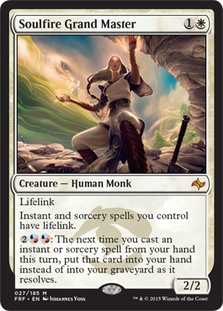

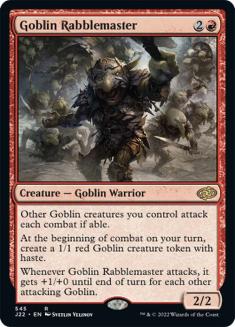


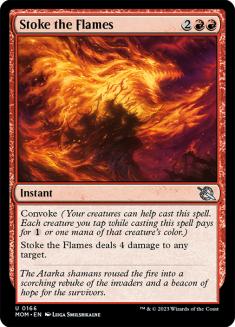
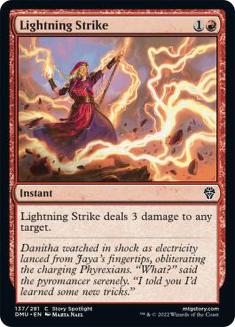


In:
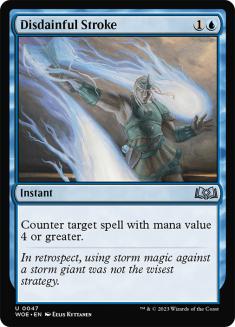

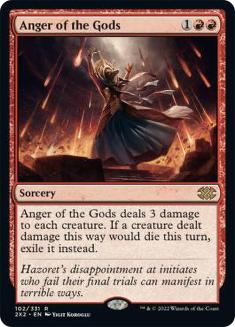


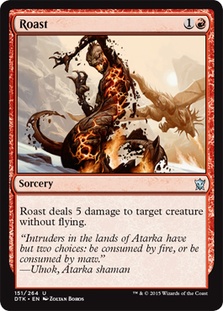

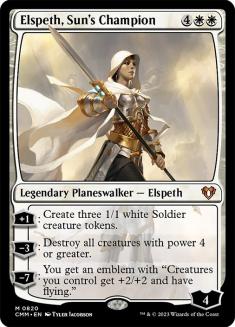

It’s possible that sideboarding in this matchup should shift depending on if we’re on the play or draw. Regardless, the point after sideboarding is to keep their board clear and eventually nickel and dime them out. Goblin Rabblemaster can be your best or worst card, depending on their board state. Soulfire Grand Master is mostly a brick but can sometimes set up a nigh-unbeatable late-game. Since I’m keeping in some Soulfire Grand Masters, perhaps all the Stoke the Flames should stay.
VS U/B Control
Out:
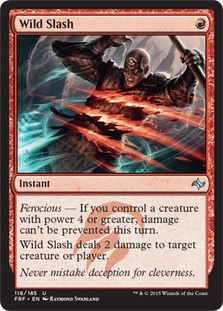




In:





This is just general advice, since there is no stock U/B Control list at this point. Magic Origins gave them some new tools, and who knows how the masses will build it.
I like this matchup, although it can be difficult. Pace your threats, as they have nothing that forces you to overextend. Counterspells should be reserved for Dig Through Time or a big finisher of theirs. In my experience, you don’t need a ton of help here. Jace, Ojutai’s Command, and Dig Through Time should allow you to go long with them, so you don’t need a matchup breaker like Mastery of the Unseen.
Harbinger of the Tides is clearly not great here, but it’s better than a burn spell and is a flash threat.
VS Goblins
Out:
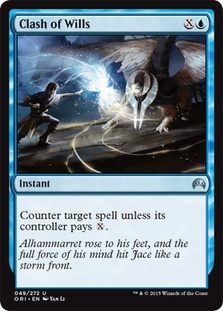

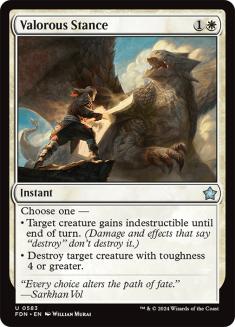



In:
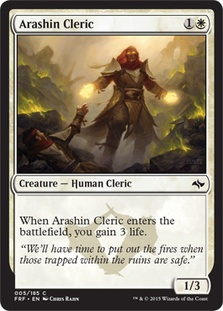





This matchup is simple and should be in your favor. Arashin Cleric and Ojutai’s Command is a potent combination, and one that should almost defeat the deck on its own assuming you have anything else going on. Goblin Piledriver gives them another way to break through a 1/3 body, but that’s what our spot removal is for.
You don’t have time to set up Jace in the early game, so we shave some of them. Due to their low land count, it’s possible that they topdeck better than we do in the mid-game, so I want to keep some in. If you manage to transform Jace and you’re not already dead on board, it will probably stabilize you entirely.
It’s possible that I’m underestimating Negate (and possibly Clash of Wills) here.
VS G/B Elves
Out:




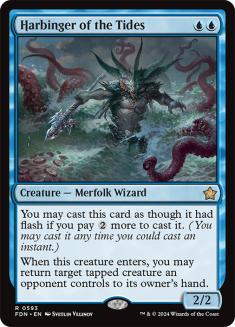


In:







This matchup is very similar to the Goblins matchup, where you need to contain them while also working toward killing them. Anger of the Gods is great here, although Collected Company allows them to recover quickly so be careful. I believe you want more than one Disdainful Stroke after sideboarding, but I’m somewhat worried about either being flooded with them or being forced to tap out, allowing them to resolve their big spells. Maybe the answer is as simple as finding room for some Hallowed Moonlights.
Despite trying to stabilize, Harbinger of the Tides doesn’t seem great here because of how many enters-the-battlefield effects they have. The prospect of bouncing an Elvish Mystic or Gnarlroot Trapper is very appealing though, so perhaps they should stay in.
VS Abzan Megamorph
Out:











In:





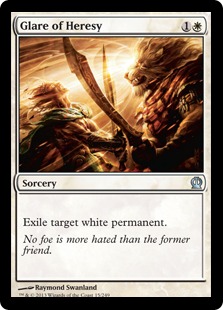





This is another matchup that may warrant a variation on sideboarding depending on whether you’re on the play or draw. I think that type of thing is more relevant with Brad’s Dragonlord Ojutai configuration because of the wildly different mana curves. However, Goblin Rabblemaster is a card that can just run away with the game, especially on the play, so perhaps it’s worth sideboarding in a way that maximizes those free wins.
With Brad’s deck, it’s possible to load up on Anger of the Gods because of how well they play with Dragonlord Ojutai, but since we don’t have the same top end it might be better to remain aggressive when you’re on the play. If you lead on Jace, Vryn’s Prodigy, either they kill it or you should be able to transform it the turn you cast Anger of the Gods. That might mean you can still progress your game plan while utilizing Anger of the Gods, even if it seems counter-intuitive with all the early-game creatures.
These are some other sideboard options:
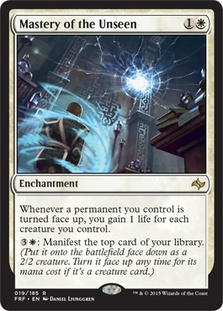
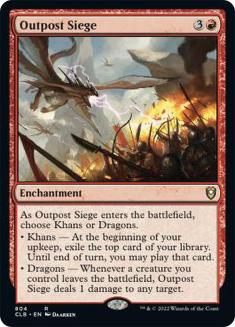
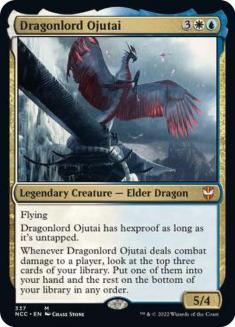
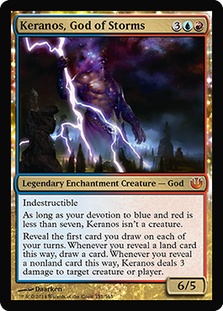
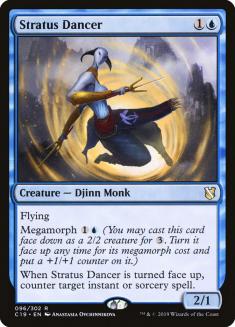
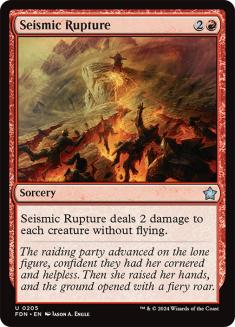
The first four are unnecessary or bad alternatives to additional Dig Through Times or Elspeth, Sun’s Champions, but are still worth considering. Stratus Dancer is not as efficient as a Negate and now we have all the two-drops we could hope for. Seismic Rupture, while better with Mantis Rider, is much worse than Anger of the Gods against the various X/3 creatures.
Jeskai is not the best deck in the format, but it’s fun, it’s my style, and it received several neat tools that may put it back to Tier One status. There are definitely other decks I wouldn’t mind playing at SCG Chicago, but Jeskai is probably the deck that I’ll tuned the most. I also know it well, so here’s hoping for a deep run!


